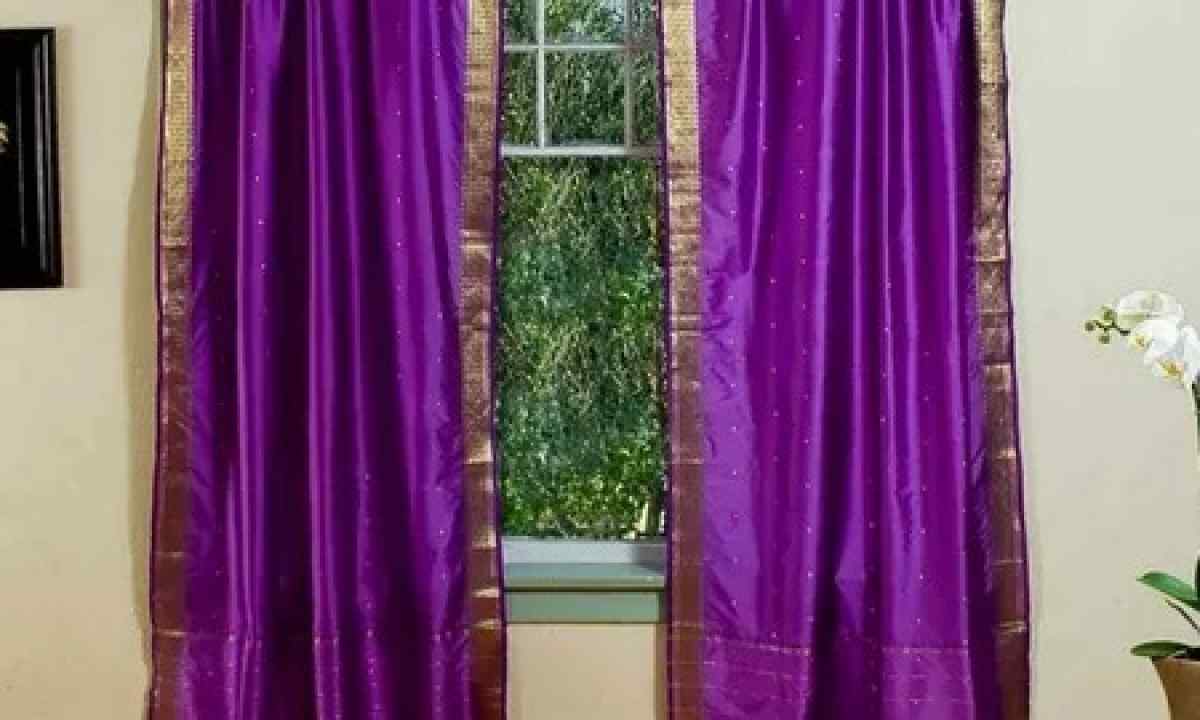Curtains and other draperies play huge role in registration of interior. Styles of curtains are extremely various. Curtains can be short and long, with lambrequin and without, with puffs, assemblies, cross and longitudinal folds. Therefore before going to shop, it is necessary to decide that you are going to sew, define, quality what fabric is necessary to you and also to calculate its approximate quantity.
Registration of window should be begun with purchase of eaves. From how your curtains will fasten, the amount of fabric in many respects depends. If the eaves already are, measure its length. Measure also length of curtains from eaves to bottom edge. If the bottom edge is trimmed by fringe, lace or sewing, subtract border width from the received measure.
It is the best of all to measure window by folding meter as it does not sag. The centimetric tape approaches less.
The way of fastening of curtains and also way of processing of top also is of great importance for calculation of amount of fabric. It can be short loops from threads, big loops from fabric. Measure distance from eaves to the expected upper edge of curtains. Subtract this distance from the total length of product. To receive final total, add allowances for processing of top and bottom to the received result.
Determination of length of curtain can be expressed formula h=H-(n1+n2) +p1+p2 where H – curtain length from eaves to bottom edge, n1 and n2 – width of border and length of loop, p1 and p2 - allowances.
Standard width of cut of portyerny fabric - 1.4 m, 2.8 m and 3 m. But in shops you can meet also cuts of other width. Each subspecies of the material intended for registration of windows have the coefficient of assembly. For fine fabrics without the drawing, like organza, will make veils, grids, coefficient 3.5 as such curtains have to be very magnificent. That is for determination of the general width of curtains it is necessary to increase length of eaves by 3, 5. For fabrics of average density the coefficient usually makes 2, 5. Tulle and chiffon belong to such materials, for example. If you are going to sew dense curtains from velvet or other heavy portyerny fabric, length of eaves needs to be increased by 1.5. It is necessary to consider type of drapery also. If the curtain gathers on standard curtain tape, choose the smallest coefficient of assembly. In this case at you the accurate, evenly located sborochka as a result have to turn out. If puffs are assumed, the coefficient will be the greatest. Even for velvet it will make not less than 2, 5, and even 3, depending on type of puffs. Solve whether there will be you you will process side seams. It becomes not always, it is sometimes better to leave edges. If processing is necessary, to width of eaves it is necessary to add 10-20 more cm. Define quantity of cloths. For this purpose separate result of multiplication of length of eaves by coefficient of assembly into cut width. At the same time it is necessary to consider that the drawing has to go in one direction. Especially attentive relation is demanded by patterns with large motives. In this case fabrics can be required about one and a half times more, than monophonic as elements of pattern have to be located on all cloths according to the conceived composition. For determination of total amount of material it is necessary to consider some more reasons. Short curtains can come to an end slightly above or slightly lower than windowsill. Such curtains look well if eaves not especially long. Undoubted advantage is that it is very easy to open and close short curtains. Besides, fabric wears out evenly and quite slowly. As a rule, such curtains come to an end 1-2 cm above windowsill or are 10-15 cm lower. Long curtains do to floor or are 1-2 cm shorter. The second option is more preferable if fabric not too iznosoustoychiva.
